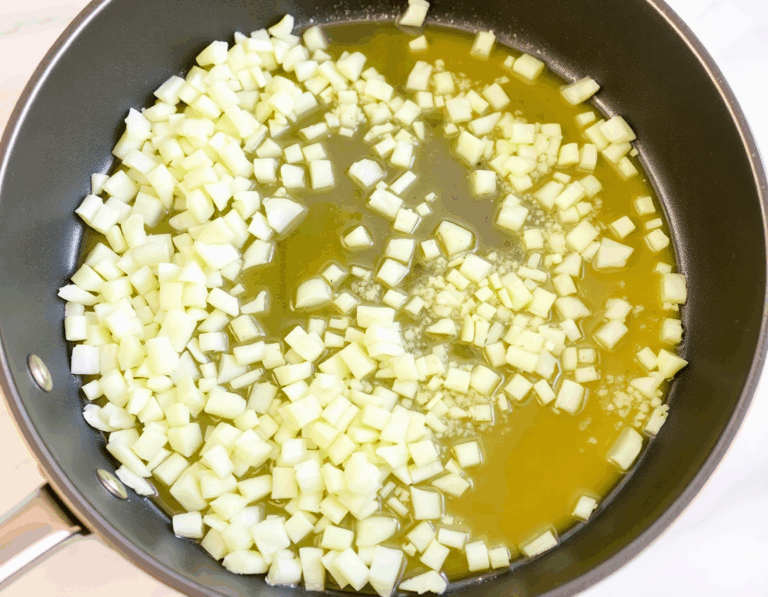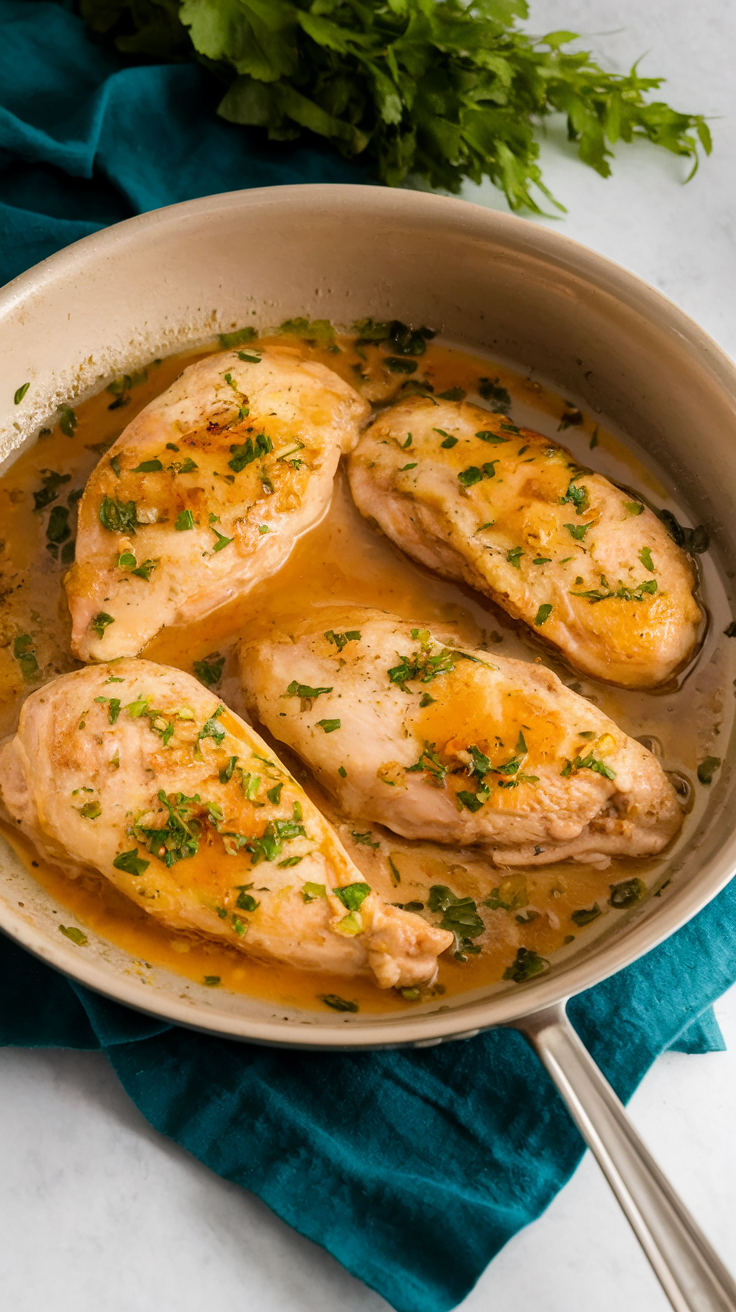Picture this: a cozy evening at home, the soft glow of kitchen lights casting shadows over a simmering pot.
There’s something magical about the scent of chicken sizzling in a creamy white wine sauce—it’s like a warm hug for your senses. This dish is not just a recipe; it’s an experience.
Perfect for those nights when you crave comfort but don’t want to spend hours in the kitchen.
Steps
- Slice each chicken breast horizontally to create four pieces. Cover with plastic wrap and flatten them to an even thickness using a meat mallet.
- Heat olive oil in a large skillet over medium-high heat. Season the chicken pieces with salt and pepper, then coat them in flour, shaking off any excess.
- Cook the chicken in the skillet for 4 to 5 minutes on each side until browned and fully cooked, ensuring the internal temperature reaches 165°F. If needed, add a little more oil when flipping the chicken. Transfer cooked chicken to a plate and cover with foil.
- In the same skillet, melt 2 tablespoons of butter over medium heat. Sauté the chopped onions until they are soft and golden, about 5 minutes, then add the garlic and cook for another 30 seconds.
- Pour in the chicken broth and white wine, scraping up any browned bits from the bottom of the skillet. Stir in the thyme leaves and bring to a simmer.
- Reduce the heat to medium-low and let the sauce simmer until it has reduced by about two-thirds and the alcohol has cooked off, approximately 12 to 15 minutes.
- Mix the remaining tablespoon of chicken broth with cornstarch until smooth, then stir it into the sauce. Cook for about a minute more until the sauce thickens.
- Stir in the remaining 2 tablespoons of butter until melted, and season the sauce with additional salt and pepper to taste.
- Return the chicken to the skillet, spoon the sauce over the pieces, sprinkle with parsley, and serve immediately.

Ingredients
- 2 boneless, skinless chicken breasts (12 oz each)
- Salt and freshly ground black pepper, to taste
- 1/3 cup all-purpose flour
- 1 tablespoon olive oil
- 4 tablespoons unsalted butter, divided and cut into 1 tablespoon pieces
- 1 cup finely chopped yellow onion (from 1 small onion)
- 2 teaspoons minced garlic (approximately 2 cloves)
- 1 1/2 cups plus 1 tablespoon low-sodium chicken broth, divided
- 1 cup dry white wine (such as Sauvignon Blanc, Chardonnay, or Pinot Grigio)
- 2 teaspoons fresh thyme leaves
- 1 1/2 teaspoons cornstarch
- 1 tablespoon minced fresh parsley
Nutritional Values
Calories 1692 | Calories from Fat 684 | Fat 76g | Saturated Fat 36g | Trans Fat N/A | Polyunsaturated Fat 8g | Monounsaturated Fat 28g | Cholesterol 556mg | Sodium 1684mg | Potassium 3356mg | Carbohydrates 48g | Fiber 4g | Sugar 12g | Protein 152g | Vitamin A 3044IU | Vitamin C 56mg | Calcium 180mg | Iron 8mg
FAQ
- Can I use a different type of chicken for this recipe?
- Yes, you can substitute the chicken breasts with boneless, skinless chicken thighs. Just ensure they are cooked through, as thighs may require a slightly longer cooking time.
- What can I use instead of yellow onion in the recipe?
- You can replace yellow onion with 1/2 cup of diced shallots to add a different flavor profile to the dish.
- How can I make the sauce creamier?
- To achieve a creamier sauce, reduce the chicken broth by 1/4 cup and replace it with 1/4 cup of heavy cream. Add the cream when you incorporate the final tablespoons of butter.
- What other herbs can I use instead of thyme?
- If you prefer, you can use other herbs such as rosemary, chives, or tarragon in place of thyme for a different flavor.
- Why is it important to simmer the sauce long enough?
- Simmering the sauce for at least 12 minutes allows the alcohol flavor from the wine to cook off, resulting in a more balanced and enhanced taste. Avoid rushing this step to preserve the sauce’s flavors.
Tips
- Allow the sauce to simmer for at least 12 minutes to ensure the alcohol flavor from the wine is fully cooked off. Avoid turning up the heat to rush this process, as it could negatively affect the sauce’s flavor.
- Be generous with the butter used in the sauce. Its richness balances the acidity from the wine and enhances the overall flavor of the dish.
- Quickly sauté the garlic, as it can easily burn and impart a bitter taste. A brief 30-second sauté should suffice for adding flavor without burning.
- Ensure chicken breasts are pounded to an even thickness before cooking. This helps them cook evenly, preventing some areas from drying out while others are still undercooked.
Equipment
- Meat Mallet – For pounding the chicken breasts to an even thickness.
- 12-inch Skillet – A good quality skillet is essential for pan-searing the chicken and making the sauce.
- Cooking Thermometer – To ensure the chicken reaches the safe internal temperature of 165 degrees Fahrenheit.
- Whisk – Useful for mixing the cornstarch and broth as well as thickening the sauce.
- Aluminum Foil – For covering the chicken to keep it warm after cooking.
